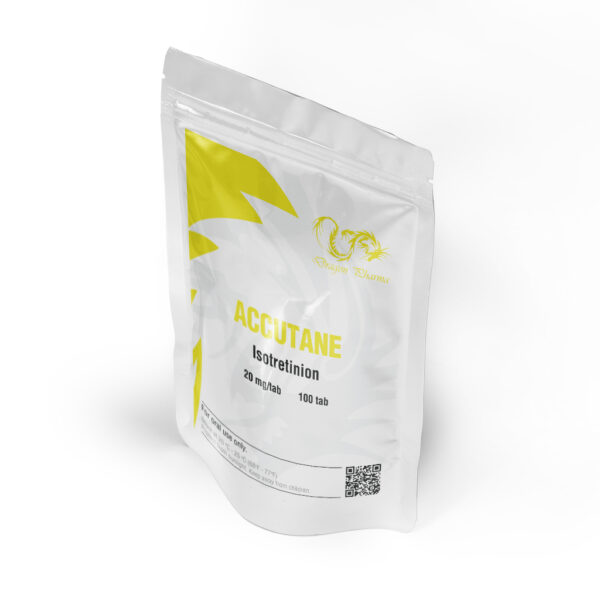No products in the cart.
Athletic Pursuits
The Importance of Core Strength in Training: Beyond Six-Packs
Beyond Six-Pack: The Importance of Core Strength in Training
When it comes to fitness and training, many people focus solely on achieving a chiseled six-pack. While having a well-defined abdominal area is aesthetically pleasing, it is important to recognize that core strength extends far beyond just the appearance of a toned midsection. The core muscles, which include the abdominals, obliques, lower back, and pelvic floor, play a crucial role in stabilizing the body and transferring force between the upper and lower body.
Core strength is not only essential for athletes and fitness enthusiasts but also for individuals in their daily lives. Whether you’re lifting heavy objects, maintaining good posture, or simply going about your daily activities, a strong core is fundamental for overall stability and functionality. Neglecting core strength can lead to imbalances, poor posture, and increased risk of injury.
Moreover, a strong core is the foundation for optimal performance in various physical activities. Whether you’re a runner, a weightlifter, or a yogi, a strong core enhances your ability to generate power, maintain balance, and execute movements with precision. It acts as a stabilizer, providing a solid base for the rest of the body to work efficiently and effectively.
Additionally, core strength training goes beyond just targeting the superficial abdominal muscles. It involves engaging the deep core muscles, such as the transverse abdominis and multifidus, which are responsible for providing stability and support to the spine. By focusing on these deeper muscles, you can improve your posture, alleviate lower back pain, and enhance overall spinal health.
In this article, we will delve deeper into the importance of core strength in training, exploring its benefits beyond a six-pack. We will discuss how core strength impacts daily life, athletic performance, and overall well-being. Furthermore, we will provide practical recommendations and exercises to help you develop a strong and functional core that goes beyond mere aesthetics. So, let’s embark on this journey to discover the true significance of core strength in training.
The Role of Core Strength in Daily Life
When we think about the importance of core strength, it’s essential to understand how it impacts our daily lives. From the moment we wake up to the moment we go to bed, our core muscles are constantly engaged in supporting and stabilizing our bodies.
1. Posture and Spinal Health
A strong core is vital for maintaining good posture. The muscles in the core help to support the spine and keep it in proper alignment. When the core muscles are weak, it can lead to slouching and poor posture, which can cause strain on the spine and lead to discomfort and pain. By developing core strength, we can improve our posture, alleviate back pain, and prevent future spinal issues.
2. Functional Movements
Core strength is crucial for performing everyday movements with ease and efficiency. Whether it’s bending down to pick up something heavy, reaching for an object on a high shelf, or twisting to look behind you, a strong core provides stability and power for these functional movements. It allows us to move with control and reduces the risk of injury.
3. Injury Prevention
A weak core can increase the risk of injury, not just in the core area itself but also in other parts of the body. When the core muscles are unable to stabilize the body properly, it puts additional stress on other muscles and joints, making them more susceptible to strains and sprains. By strengthening the core, we can create a solid foundation for the entire body, reducing the risk of injuries during physical activities.
The Impact of Core Strength on Athletic Performance
Athletes across various sports understand the significance of core strength in optimizing their performance. Whether you’re a sprinter, a basketball player, or a swimmer, a strong core can make a world of difference in your athletic abilities.
1. Power and Force Transfer
Having a strong core allows for efficient transfer of force between the upper and lower body. This is especially important in sports that require explosive movements, such as jumping, throwing, or sprinting. A strong core provides a stable base for generating power and transferring it through the kinetic chain, resulting in increased speed, agility, and overall athletic performance.
2. Balance and Stability
Balance and stability are crucial in almost every sport. A strong core helps to improve balance by providing a solid center of gravity. It allows athletes to maintain control and stability during dynamic movements, reducing the risk of falls or loss of coordination. Whether it’s maintaining balance on a surfboard or staying steady during a yoga pose, a strong core is essential.
3. Injury Resilience
Athletes are often exposed to repetitive movements and high-intensity activities that can put stress on their bodies. A strong core acts as a protective shield, absorbing and distributing forces effectively. It helps to prevent overuse injuries and provides stability to vulnerable areas, such as the lower back and hips. By incorporating core strengthening exercises into their training routines, athletes can enhance their resilience and reduce the risk of sports-related injuries.
Practical Recommendations for Core Strength Training
To develop a strong and functional core, it is important to incorporate specific exercises that target the different muscle groups within the core. Here are some practical recommendations:
1. Planks
Planks are a classic core exercise that engage multiple muscles simultaneously. Start with a forearm plank, holding the position for 30 seconds and gradually increasing the duration as you build strength. To challenge yourself further, try side planks or add variations like plank jacks or mountain climbers.
2. Deadlifts
Deadlifts are a compound exercise that targets the entire posterior chain, including the core. They help to strengthen the lower back, glutes, and hamstrings while also engaging the core for stability. Start with light weights and focus on maintaining proper form throughout the movement.
3. Pilates or Yoga
Pilates and yoga are excellent practices for developing core strength and stability. These disciplines emphasize controlled movements and deep engagement of the core muscles. Incorporate exercises like the Pilates Hundred, boat pose, or plank variations into your routine to challenge and strengthen your core.
4. Medicine Ball Exercises
Using a medicine ball can add an extra challenge to your core workouts. Exercises like Russian twists, medicine ball slams, and woodchoppers require rotational movements that engage the obliques and deep core muscles. Start with a lighter medicine ball and gradually increase the weight as your strength improves.
5. Stability Training
Incorporate stability training exercises into your routine to challenge your core and improve balance. This can include exercises like single-leg balances, stability ball exercises, or using a balance board. These exercises force your core muscles to work harder to maintain stability, leading to improved core strength over time.
Conclusion
While the pursuit of a six-pack may be a common fitness goal, it is essential to recognize that core strength goes beyond aesthetics. Developing a strong and functional core is crucial for overall stability, functionality, and athletic performance. By understanding the importance of core strength in daily life and sports, and incorporating targeted exercises into our training routines, we can unlock the full potential of our bodies and enhance our overall well-being.
Accutane DP
Original price was: 108 USD.92 USD Current price is: 92 USD.
Package: 100 tabs (20mg/tab) Active Substance: Isotretinoin Product Name: Accutane, Isotretinoin , Accutane DP
Practical Recommendations for Building Core Strength
1. Prioritize Consistency
Consistency is key when it comes to developing core strength. Aim to incorporate core-focused exercises into your training routine at least 2-3 times per week. Consistently challenging your core muscles will lead to gradual improvements in strength and stability.
2. Start with the Basics
If you’re new to core training, it’s important to start with foundational exercises before progressing to more advanced movements. Begin with exercises like planks, bridges, and bird dogs to build a solid core foundation. Focus on maintaining proper form and gradually increase the intensity and difficulty as you progress.
3. Engage the Deep Core Muscles
While traditional abdominal exercises like crunches and sit-ups have their place, it’s important to also engage the deep core muscles for optimal core strength. Exercises like the vacuum exercise, pelvic tilts, and dead bugs target the transverse abdominis and pelvic floor muscles, which play a crucial role in core stability.
4. Incorporate Functional Movements
In addition to isolated core exercises, it’s important to incorporate functional movements that engage the core in a dynamic way. Exercises like squats, lunges, and kettlebell swings require core stability and activation to maintain proper form and control throughout the movement. These movements mimic real-life activities and enhance overall core strength and functionality.
5. Progressively Increase Difficulty
To continue challenging your core muscles and promoting growth, it’s important to progressively increase the difficulty of your exercises. This can be done by adding resistance, increasing the duration or intensity of your holds, or incorporating unstable surfaces like a stability ball or Bosu ball. Gradually progressing your workouts ensures continued improvement and prevents plateauing.
6. Seek Professional Guidance
If you’re unsure about proper form or which exercises are best for your specific needs, consider seeking guidance from a fitness professional or certified trainer. They can assess your current fitness level, provide personalized recommendations, and ensure you’re performing exercises correctly to maximize results and minimize the risk of injury.
7. Listen to Your Body
Pay attention to how your body feels during and after core training sessions. If you experience pain or discomfort, it’s important to modify or adjust your exercises accordingly. Everyone’s body is unique, so listen to your body’s signals and adjust your training as needed to prevent injury and promote long-term success.
8. Stay Mindful of Nutrition and Recovery
Building core strength also requires proper nutrition and adequate recovery. Ensure you’re fueling your body with a balanced diet that provides the necessary nutrients for muscle growth and repair. Additionally, prioritize rest and recovery days to allow your muscles to heal and grow stronger. Adequate sleep, hydration, and stress management are also essential for overall well-being and optimal core strength development.
By implementing these practical recommendations into your training routine, you can go beyond the pursuit of a six-pack and develop a strong, functional core that enhances your overall fitness, performance, and daily life.



